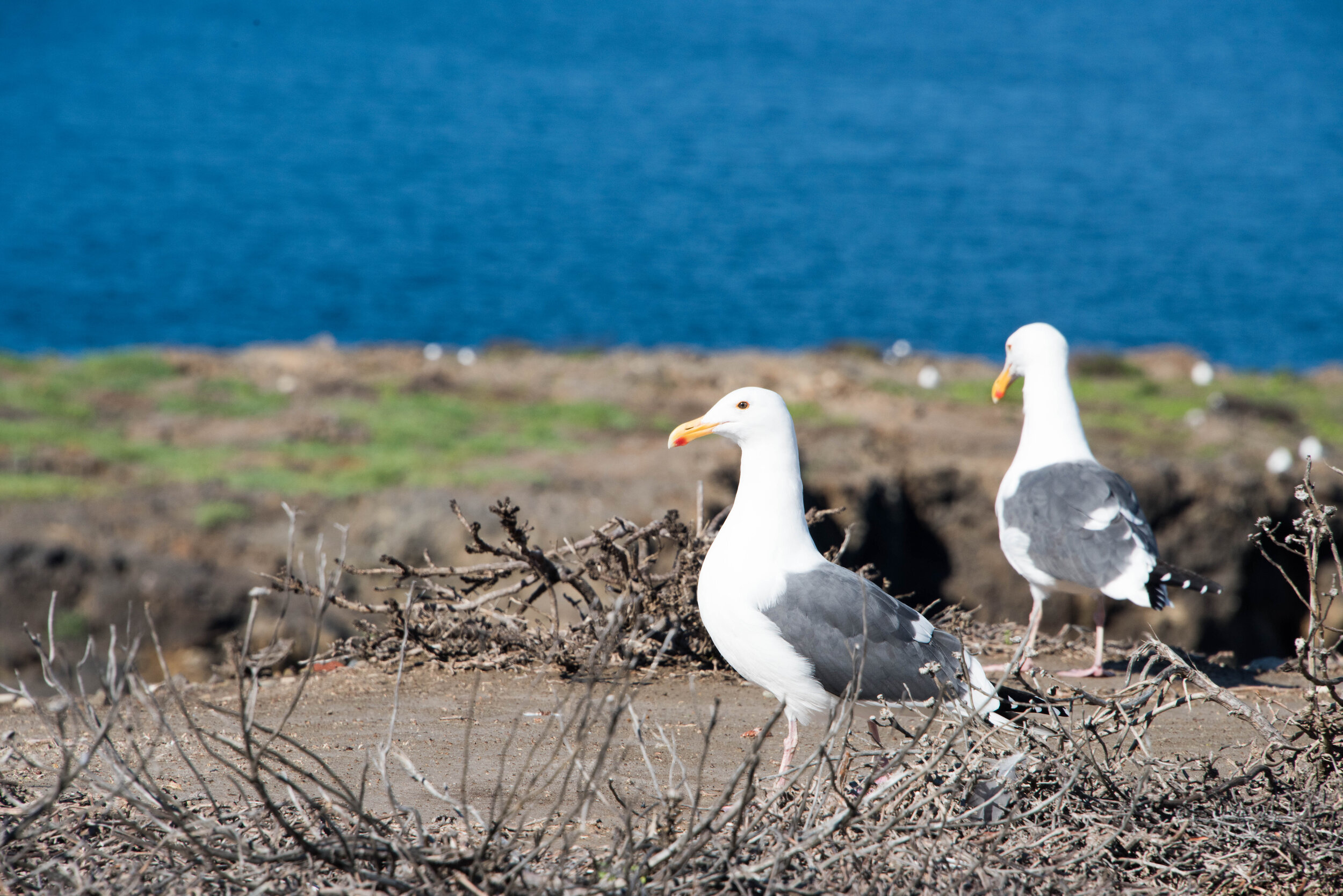The Western Seagull
Larus occidentalis
About
Western gulls are the most prevalent seabird in the Channel Islands National Park, with a population that has been growing steadily in the tens of thousands. Western gulls are coast dwellers that mainly reside on the cliffs and shores of Southern California and can be found flying throughout the Channel Islands.
Fun Facts
Found along the along Pacific Coast of North America with breeding sites from central Baja California north to Washington.
There are large groups found both on Santa Barbara and Anacapa Islands.
They do nest on these offshore islands and can fill their nest with various vegetation, rope, plastic or other items.
It takes four years for a western gull to achieve its gray and white appearance!
Gulls can live up to 25 years old.
Western gulls feed only on the ocean's surface and do not dive like many other seabird species.
Appearance
The adult western gull has a deep gray back and wings, with black wing-tips that blend into the rest of the wing, unlike many species where the black is clearly defined. The underwing is white with a narrow band of gray. The head is mostly white, with a limited amount of brown streaking, especially in non-breeding plumage. The large bill is yellow with a red spot, and the eye is dark yellow. The western gull is a four-4 year gull, meaning that it takes four years to achieve adult plumage. Juveniles are mottled brown, with a dark bill and dark eyes, and pinkish-gray legs. This plumage varies and takes on more of the adult plumage characteristics in each successive year.
Island Occupancy
The islets of Anacapa, which is part of the Channel Islands National Park, hosts the largest protected breeding colony of western gulls in the world with over 10,000 gulls gathering during nesting season from May through July. There is also a sizeable colony of western gulls (approximately 7,000 pairs) on Santa Barbara Island.
Conservation
Populations of western gulls have restricted range and therefore, are vulnerable to oil pollution, ocean acidification, and climate change. In addition, they have also suffered from human disturbances and in the past, introduced black rats on Anacapa Island. Visit Seabirds for more information about restoration activities on Anacapa to remove black rats.

